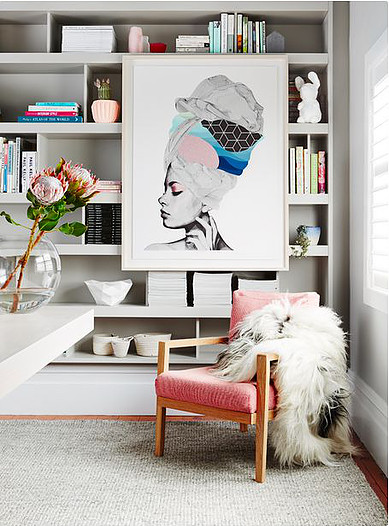The range and styles of kitchen worktops out on the market at the minute can be a little overwhelming when you are starting to design your own kitchen. Below I have broken down the most common types and discussed the pros and cons of each for you to help ease the pain.
Granite worktops
Granite has traditionally been the go to choice for luxurious kitchens due to its stylish markings and glossy appearance. Its popularity is in part down to its hard wearing nature, its very difficult to chip or scratch this surface and once installed requires no more maintenance than a quick wipe with a cloth. On top of this the stone has antibacterial properties and is heat resistant. All of this does, however, come at a price, its generally one of the more expensive options for a work surface as its not a material that can be cut by anyone. This material is super heavy and requires templating and fitting by professionals. Also worth noting is that the markings on granite are irregular in appearance due to it being a naturally formed material, so its no good for those who like uniformity in their design.
Quartz worktops
Quartz is a man made alternative to granite and has grown in popularity over the last decade due to its more uniform and contemporary work surface. Quartz is made by combining quartz/reconstructed stone with a resin to create an extremely hard wearing and generally stain resistant worktop. Elements such as mirrors, glass and metals can be added to the mix to create a unique pattern. One of the main benefits of quartz is the fact it's non porous and therefore resistant to staining, it does have a reasonable heat resistance and as it comes in larger slabs than other materials there are fewer joints and joins in the material. It also comes in thinner sheets so is perfect for those wanting a more modern look.
Wooden worktops
Wood is a very popular choice for those seeking a traditional feel in their kitchen. For some the patina it develops over time is a huge appeal to many but the maintenance that wood does require, oiling on a regular basis, cleaning up spills immediately, puts others off. If maintained properly it also has anti bacterial properties It is considerably cheaper than stone and comes in a variety of colours and grains with hardwoods being the most popular choice. Fitting of a wooden worktop can be done by a joiner or your kitchen supplier on site which also helps cut down on templating and labour costs.
Laminate worktops
Laminates are a very cost effective worktop option and come in a large range of colour and styles. Its easy to maintain and clean and if not scratched or damaged can have anti bacterial properties. A laminate will suit any kind of kitchen style but you really do get what you pay for with. There is a huge variation in quality and cheaper options can peel, burn/melt and scratch easily. Where previously you could only get bull nose finish many laminate companies are now offering square edge and thinner profiled options for those that want to create a more modern look.
Concrete worktops
Concrete has become a fashionable option over the last couple of years in kitchen worktops, it suits both industrial style settings but can also look great when paired with a modern gloss and shaker style cabinets. As it is created in situ it can be seamlessly produced and there is no need for joints, as its a bespoke piece the finished texture and dappling really is unique to each worktop. The downsides is that the concrete does require sealing as its a natural porous material and all spills need to be cleaned up asap in order to prevent staining, but a quick wipe with soapy water is all thats needed to keep it clean. Many people think of this as a cold hard material but it can look warm when used in the right setting.
Stainless Steel worktops
Normally the preserve of commercial kitchens stainless steel has become a go to choice for residential kitchens over the last couple of years due to the fact its incredibly durable, naturally antibacterial, easy to clean, is waterproof and heat and acid resistant. Its a very light and modern material but could feel a little overwhelming if used over a large area, many people are therefore using it on islands or a small section of workspace to help soften what could otherwise be a cold feeling material.
Composite material worktops
Composite worktops have many of the benefits of quartz and stone, cool to touch, heat and scratch resistant, stain resistant, coloured all the way through and is seamless but without the high cost. Its a seamless material so even if you need a joint it should be invisible. It can also be moulded into any shape, so is perfect for seamlessly integrated sinks and can be cut on site by a competent joiner. In terms of price it is generally cheaper than a quartz or granite and comes in standard lengths of 3000mm - 4050mm, some of the key brands to look for are Corian which is at the top end of the price bracket and Miro stone which is a very budget friendly option. Its a great alternative to stone and the style goes as well with a high gloss/matt handless design or a traditional shaker
Hopefully I have helped clear the waters when it comes to choosing a worktop for your kitchen but if you are still unsure as to what worktop is right for you then please drop me a message on the contact page






















































































